

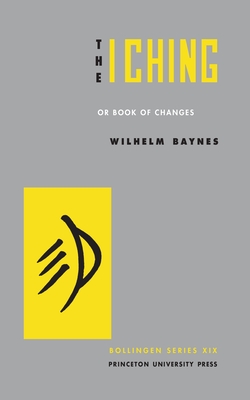
The bestselling English translation of the ancient classic of Chinese divination that has inspired millions with its timeless insights into the changing nature of all existence
The I Ching, or Book of Changes, has exerted a living influence in China for thousands of years. Today, it continues to enrich the lives of readers around the world. First set down in the dawn of history as a book of oracles, it grew into a book of wisdom with the inclusion of commentaries on its oracular pronouncements, eventually becoming one of the Five Classics of Confucianism and providing a common source for both Confucianist and Taoist philosophy. This edition of the I Ching is the most authoritative and complete translation available, preserving the spirit of the ancient text while providing a vital key for anyone who seeks to live harmoniously with the immutable law of change. The book presents the sixty-four hexagrams of the I Ching along with their texts and interpretations in a format especially designed for easy reference. Unlike many editions of the I Ching, it also features the Ten Wings, supplemental writings traditionally ascribed to Confucius that provide indispensable insights into the symbolic structure of the hexagrams and their place in a cosmology where change is the only constant. With an illuminating foreword by C. G. Jung and an informative introduction by Richard Wilhelm, this beautiful edition of the I Ching shares the essence of wisdom and a true understanding of life.

The bestselling translation of one of the world's great classics, now in a beautiful new edition
The I Ching, or Book of Changes, is a widely-beloved and foundational text of Chinese philosophy and Taoist wisdom. When its advice is sought with sincerity and sensitivity, it imparts profound perspective and and balance in living. Whether approached as an oracular text or viewed simply as a long-term spiritual school brought vividly to life by the casting of a hexagram in a daily reading or important moment, the I Ching dynamically reinforces values which inevitably lead their adherents to well-being and good fortune. The clear, direct language of Brian Browne Walker's contemporary translation have made this one of the most accessible and popular versions of the I Ching in the world for decades.
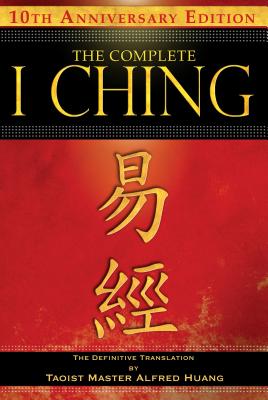
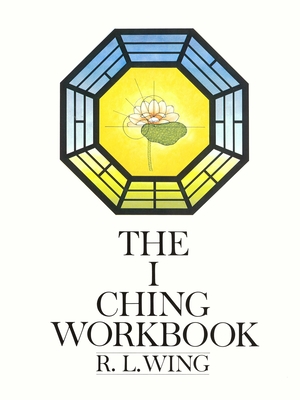

According to ancient legends, thousands of years ago a mysterious being known as the Nine Tail Fox taught her devotees the secrets of witchcraft and alchemy. This witch cult survives to this day and is practiced in many Chinese and Japanese communities in relative secrecy.
From her origins with the ancient Wu Shamans and the Tantric dakinis, the author explores this unique and often overlooked form of witchcraft.
Learn the history of the Fox Immortal and her influence on Asian politics and history. Investigate the Tantric origins of the Fox Goddess.
Learn the secret rituals from the Chinese grimoires that invoke the help and aid of the Fox Immortal as a personal magical tutor.
Learn the ways of glamour and fascination taught to devotees of the Fox Temple. Investigate the mysterious tantric rites of the Tachikawa Ryu.
Investigate the Mysteries of the white branch of death and the red branch of sexuality.
Learn some of the many spells used by the Fox cult of witches.
---------
This may be a topic wholly new to the average western reader though it will have familiar elements, after all, all true Mysteries in the true sense of the word have a common thread.
Some readers may be familiar with the Lady Fox from various pop-cultural references in Japanese anime or Hong Kong movies and even video games. It is Kitsune, the fox spirit of the west that is most accessible to the average western audience.
However the cultus of the Fox goes far further back than her appearance in Japan and Korea, her roots seemingly going as far back as the ancient tantric mysteries of India.
I am a practitioner in the magical tradition of Taoism and it was in China that I learned the basics of the Fox Fairy as she is sometimes called. However China is a very conservative country and it seems obvious to me that a lot was implied but never spoken of, or perhaps even forgotten.
I ventured into the depths of the mysteries of the Fox Lady and the path took me in many directions and through many synchronicities on that journey.
While I preserve the fox tradition as passed to me, I do add some further material, also based on traditions that connect with her 'sadhana' [glossary]. I expect there will be an outcry from some Taoist and Shingon purists since in a sense I am resurrecting the heterodox Shingon cult of the Tachikawa. The logic of this decision will become clear. I am certain this is the correct move.
In this way, we rise above the apparent shallowness of the Fox Temple as seen in contemporary Hong Kong for example, where the Fox Fairy has merely become a means to become a more attractive person in the world of film and music.
In this book, I am giving the keys to true gnosis of the Path of the Nine-Tailed Fox.


In a radically new translation and interpretation of the I Ching, David Hinton strips this ancient Chinese masterwork of the usual apparatus and discovers a deeply poetic and philosophical text. Teasing out an elegant vision of the cosmos as ever-changing yet harmonious, Hinton reveals the seed from which Chinese philosophy, poetry, and painting grew. Although it was and is widely used for divination, the I Ching is also a book of poetic philosophy, deeply valued by artists and intellectuals, and Hinton's translation restores it to its original lyrical form. Previous translations have rendered the I Ching as a divination text full of arcane language and extensive commentary. Though informative, these versions rarely hint at the work's philosophical heart, let alone its literary beauty. Here, Hinton translates only the original stratum of the text, revealing a fully formed work of literature in its own right. The result is full of wild imagery, fables, aphorisms, and stories. Acclaimed for the eloquence of his many translations of ancient Chinese poetry and philosophy, Hinton has reinvented the I Ching as an exciting contemporary text at once primal and postmodern.


The I Ching (pronounced ee-ching) is the oldest and most respected oracle or divinatory system in the world. There are currently two translations available which offer somewhat conflicting interpretations - the popular Confucian version and an earlier Taoist version called Zhouyi. Reconstructed by twentieth-century scholars and archaeologists, Zhouyi presents the highly imaginative world of myth and ritual that is the hidden base of thousands of years of Eastern thought.
Now, for the first time ever, Stephen Karcher fuses these two traditions using modern scholarship and archaeological and linguistic research, along with a wide background in Eastern philosophy and comparative religion, and presents them to the modern Western reader in a comprehensive and accessible new form. TOTAL I CHING is a complete oracle with instruction for immediate use in all life situations, but is also the first translation to detail the mythology of the divinatory system, offering a revolutionary new approach to the world's oldest wisdom tradition.

The West's foremost translator of the I Ching, Richard Wilhelm thought deeply about how contemporary readers could benefit from this ancient work and its perennially valid insights into change and chance. For him and for his son, Hellmut Wilhelm, the Book of Changes represented not just a mysterious book of oracles or a notable source of the Taoist and Confucian philosophies. In their hands, it emerges, as it did for C. G. Jung, as a vital key to humanity's age-old collective unconscious. Here the observations of the Wilhelms are combined in a volume that will reward specialists and aficionados with its treatment of historical context--and that will serve also as an introduction to the I Ching and the meaning of its famous hexagrams.

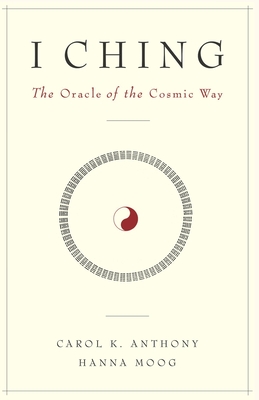

Projectors hold a unique role within Human Design. The Projector Type plays a vital part in guiding the energy of the other Types and ushering in a new consciousness for the evolution of humanity. Yet, life can be challenging for a Projector that has been living day-to-day in misalignment with their energetic blueprint. They often feel disempowered, invisible, unproductive, exhausted, and even broken.
This book guides Projectors through detailed information to understand who they are, why they are here, and what are the best ways to navigate their role in the world while also learning how to access their powers in sustainable and effective ways.
Human Design Specialist Evelyn Levenson shares insights and experience as a Projector herself, including:
Projectors will thrive with the valuable guidance and information in this book that they need to step into their brilliance, power, and sweet success.

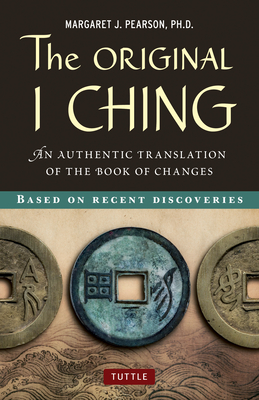

A must-read for anyone interested in learning about the I Ching, The Inner Structure of the I Ching is unique in its exploration of this ancient work. Influential interpreter of Tibetan mysticism Lama Anagarika Govinda shares insights that evolved over decades from his travels, observations, and personal practice as he sought to understand this timeless and ancient Chinese text.
Govinda believed that the trigrams and hexagrams of the I Ching provide wisdom that is essential in cultivating compassion, self-mastery, and a life in harmony with nature and in service to others. He introduces original concepts of the eight symbols of transformation and the correspondence of the five elements of wood, fire, earth, iron, and water with the Chinese zodiac. He goes on to explain the Eight Houses of Hexagrams in both the traditional order of King Wen and the abstract movement in curves, all thoroughly illustrated with over 150 color diagrams.
He also discusses in depth the philosophical underpinnings of the text, exploring its roots in Taoist and Confucian thought. John Blofeld's introductory discourse firmly places the philosophical underpinnings of the I Ching in the context of Taoist principles and Tibetan Buddhism-a relationship the author further elaborates in his concluding remarks.
The I Ching is both fascinating and puzzling, especially to the uninitiated, but regardless of your familiarity with this prized text, you are in good hands with Lama Govinda: he has introduced generations to Tibetan Buddhism, Buddhist meditation, and Taoism through his books and commentary. This guide is a foundational resource for scholars, students, and practitioners of Eastern philosophy.
This book is also available from Echo Point Books as a hardcover (ISBN 1648374042).

The Human Design Reflector type is a rare and unique being. They have a very special role to play as wise observers of the world. A Reflector's uniqueness gives them a specific set of challenges they must navigate if they are to exist as strong, healthy, and happy individuals. When they harness their unique strengths, they can serve as human barometers, reflecting back the current health of their community and forecasting what is energetically yet to come.
Reflectors flourish with support and guidance about how to live a fulfilling and sustainable life. Without this, they can easily feel misunderstood and, at times, lost. A thriving Reflector is a beacon of objectivity and wisdom.
This book provides Reflectors and those who love them with a tangible guide that supports Reflectors in working with their unique design, equipping them with the tools they need to fulfil their specific life purpose.

As Confucius states in The Great Treatise, divination is not the highest use of the I Ching. It can and should be used as a living reference for the highest moral and ethical standards for any individual in virtually any given circumstance.
After writing The Complete I Ching, Taoist Master Alfred Huang, encouraged by friends and family to further expound on the subtleties of the sacred text, decided to take a fresh approach. Considering the tremendous differences between life today and life three thousand years ago, the author began to discover new ways to present the ancient wisdom to modern readers. Now, in Understanding the I Ching, he offers a detailed commentary of the sixty-four hexagrams and their characters, including a detailed examination of the nature and principles of the first two gua-heaven and earth-as well as interpretations of the first hexagram and the guiding principles represented by its four characters.
With an in-depth analysis and study of the two different schools of interpretation, the construction of the hexagrams, and the placement and significance of the hexagram's host, this scholarly yet easy-to-understand book provides exceptional insight for those who have studied the I Ching and seek a deeper understanding of its subtleties and profundity.